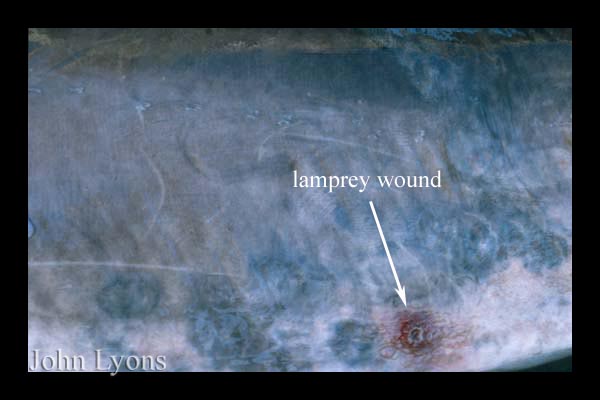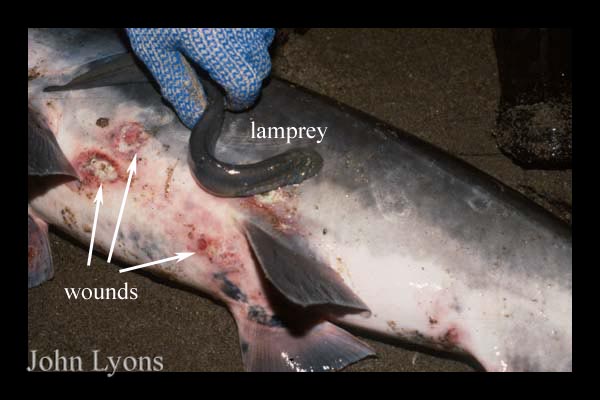Interactions
Paddlefish are very valuable for humans. Their meat is
white, firm, and boneless making it very similar to sturgeon in
taste and texture. Not only is the meat valued for its
taste, but Paddlefish roe, or eggs, are also very valuable in
that they are made into caviar. Paddlefish are also
important for humans in ways of expanding our knowledge through
research and education.
There are a number of parasitic organisms that
use the American Paddlefish as their hosts. As of today, there
are six known Trematoda—Anallocreadium spathula, larval forms of
Clinostomum marginatum, Cotylaspis cokeri, Diclybothrium
hamulatum, Distomum isoporum armatum, and Halipegus perplexus—three
known Cestoda—Marsipometra confusa, M. hastata, and M. parva—two
known Nematoda—Camallanus oxycephalus and larval forms of
Contracaecum spiculigerum—one known Leech, Illinobdella moorei,
and one known Crustacea, Ergasilus elongatus, that prey on
Polyodon spathula. Besides these parasitic organisms,
Polyodon
spathula, is also heavily parasitized by the Ichthyomyzon spp.
such as Ichthyomyzon castaneus, the Chestnut lamprey, or the
Silver lamprey, Ichthyomyzon unicuspis. Chestnut
lampreys do not consume the whole Paddlefish, but they can
weaken the Paddlefish. However, in extreme cases, there could
be a result in the death of the Paddlefish. There can and
has been as many as thirty lampreys found attached to a single
Paddlefish! To see a lamprey wound on a Paddlefish (Figure 3) or a
lamprey still attached to a Paddlefish (Figure 4) see the
pictures below.

Figure 12. Paddlefish with a visible
lamprey wound to the bottom right of the picture.

Figure 13. Paddlefish with a lamprey still attached as well as
numerous visible lamprey wounds.

Figure 14. Daphnia: Paddlefish food.
Like any other organism, Polyodon spathula can
also get diseases. As of right now, there are two known diseases that
this species can get: rostrum (paddle) degenerative disease and “Ich”
infections. Rostrum degenerative disease causes deformity of the
rostrum, as well as a narrowing and/or downward curvature of the rostrum.
The causes of this disease are believed to be Aeromonas bacteria
and columnaris disease bacteria which were both isolated from the rostrum.
For treatment, Chloramine-T at a rate of 20mg/L for one hour has
experimentally stopped the progress of this disease in raceways, or
flow-through systems. “Ich” infections are a result of the parasite
Ichthyophthirius multifilis. Treatment of this infection
consists of salt at 3ppt or raising water temperatures to 86 degrees Celsius
for several days have been successful in eliminating the parasite in
raceways.
Paddlefish live in a habitat where many different
and diverse organisms also live such as Daphnia spp., black
crappie, zebra mussels, Lake Sturgeon, small mouth bass, bluegill, and
catfish to name a few.
You thought the interactions that the Paddlefish had were interesting, wait until you get the Facts!
Visit
MultipleOrganisms.net to
explore more organisms!
Visit the University of
Wisconsin La Crosse, birthplace of the Multiple Organisms web pages!